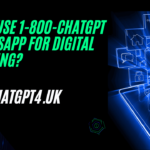Today we are gonna discuss about the Power of ChatGPT Fine-Tuning. As an AI language model, ChatGPT has been designed to assist users in a variety of tasks, such as answering questions, generating text, and performing language-related tasks.
However, what sets ChatGPT apart from other AI models is its ability to be fine-tuned to specific tasks and domains. In this article, we will explore the power of ChatGPT fine-tuning and its potential benefits for businesses, researchers, and developers.
What is ChatGPT Fine-Tuning?
ChatGPT fine-tuning is the process of training a pre-existing language model to a specific task or domain by providing it with additional data and retraining it. This process involves fine-tuning the existing weights of the model to fit the specific task, rather than training an entirely new model from scratch.
Fine-tuning is a powerful technique that can significantly improve the performance of a language model for specific tasks, such as text classification, sentiment analysis, and machine translation.
Benefits of ChatGPT Fine-Tuning
Improved Performance
One of the most significant benefits of ChatGPT fine-tuning is improved performance. By fine-tuning a pre-trained model to a specific task or domain, you can significantly improve its accuracy and effectiveness.
This is because the model has already been trained on a large corpus of text data and has learned the underlying patterns and relationships of language. By fine-tuning the model, you can further optimize its performance for a specific task, leading to better results.
Reduced Training Time and Resources
Training a language model from scratch can be a time-consuming and resource-intensive process. By fine-tuning a pre-trained model, you can significantly reduce the amount of time and resources required for training.
This is because the model has already been pre-trained on a large corpus of text data, and only needs to be fine-tuned for a specific task. This can save significant time and resources, making the process of developing and deploying AI models much more efficient.
Customizable to Specific Domains
Another significant benefit of ChatGPT fine-tuning is its ability to be customized to specific domains. This is particularly useful for businesses and organizations that need to analyze large amounts of text data in a specific domain, such as financial services, healthcare, or legal services. By fine-tuning a pre-trained model to a specific domain, you can optimize its performance for that domain and improve its accuracy and effectiveness.
Transfer Learning
ChatGPT fine-tuning also allows for transfer learning, which is the ability to transfer knowledge learned from one task to another. By fine-tuning a pre-trained model to a specific task, you can transfer the knowledge learned from the pre-training to the new task.
This can significantly improve the performance of the model for the new task, as it has already learned the underlying patterns and relationships of language from the pre-training.
Applications of ChatGPT Fine-Tuning
Text Classification
Text classification is the process of categorizing text data into predefined categories or labels. This is a common task in natural language processing and has many applications, such as spam detection, sentiment analysis, and topic modeling. ChatGPT fine-tuning can significantly improve the performance of text classification models by optimizing the model’s weights for specific categories or labels.
Sentiment Analysis
Sentiment analysis is the process of identifying the sentiment or emotion expressed in a piece of text data. This is a valuable task for businesses and organizations that want to understand customer feedback or public opinion.
ChatGPT fine-tuning can improve the accuracy of sentiment analysis models by optimizing the model’s weights for specific emotions or sentiments.
Machine Translation
Machine translation is the process of automatically translating text data from one language to another. This is a challenging task in natural language processing, as languages have different grammatical structures and idiomatic expressions.
ChatGPT fine-tuning can improve the performance of machine translation models by optimizing the model’s weights for specific language pairs, such as English to Spanish or Chinese to French.
Chatbots
Chatbots are AI-powered conversational agents that can interact with users in natural language. Chatbots have many applications, such as customer support, e-commerce, and personal assistants.
ChatGPT fine-tuning can improve the performance of chatbots by optimizing the model’s weights for specific domains or tasks, such as answering customer queries or recommending products.
How to Fine-Tune ChatGPT
Fine-tuning ChatGPT requires some technical knowledge and expertise in machine learning and natural language processing. Here are the steps involved in fine-tuning ChatGPT:
Preprocessing Data
The first step in fine-tuning ChatGPT is to preprocess the data. This involves cleaning and formatting the data to ensure that it is suitable for the task. Preprocessing may involve tasks such as tokenization, stemming, and stop-word removal.
Creating a Training Set
The next step is to create a training set by splitting the data into training and validation sets. The training set is used to fine-tune the model, while the validation set is used to evaluate the performance of the model during training.
Fine-Tuning ChatGPT
The third step is to fine-tune ChatGPT. This involves loading the pre-trained model and training it on the training set using a suitable optimization algorithm, such as stochastic gradient descent. During training, the model’s weights are adjusted to optimize its performance for the specific task.
Evaluating Performance
The final step is to evaluate the performance of the fine-tuned model on the validation set. This involves measuring metrics such as accuracy, precision, and recall, and making adjustments to the model if necessary.
Conclusion
ChatGPT fine-tuning is a powerful technique that can significantly improve the performance of language models for specific tasks and domains. By fine-tuning a pre-existing model, businesses, researchers, and developers can save time and resources, improve accuracy and effectiveness, and customize models to specific domains.
ChatGPT fine-tuning has many applications, such as text classification, sentiment analysis, machine translation, and chatbots. While fine-tuning ChatGPT requires some technical knowledge and expertise, it can be a valuable tool for anyone working with language data.
FAQs
What is ChatGPT fine-tuning?
ChatGPT fine-tuning is a technique that involves customizing pre-trained language models for specific tasks and domains. By fine-tuning the model, developers can optimize its performance for specific language tasks, such as text classification, sentiment analysis, machine translation, and chatbots.
Why is ChatGPT fine-tuning important?
ChatGPT fine-tuning is important because it enables businesses, researchers, and developers to customize pre-existing models to specific domains and tasks. This can save time and resources, improve accuracy and effectiveness, and enable models to perform better in real-world applications.
What are some applications of ChatGPT fine-tuning?
ChatGPT fine-tuning has many applications, such as text classification, sentiment analysis, machine translation, and chatbots. By customizing pre-existing models for specific tasks and domains, businesses and researchers can improve the accuracy and effectiveness of their language models.
How do I fine-tune ChatGPT?
Fine-tuning ChatGPT requires some technical knowledge and expertise in machine learning and natural language processing. The process involves pre-processing data, creating a training set, fine-tuning the model, and evaluating performance. It is recommended to have prior experience with deep learning and natural language processing before attempting ChatGPT fine-tuning.
What are some best practices for ChatGPT fine-tuning?
Some best practices for ChatGPT fine-tuning include starting with a small dataset and gradually increasing the size, using a pre-trained model with similar characteristics to the task, using an appropriate optimization algorithm, and evaluating the performance of the model on a validation set. Additionally, it is recommended to use a GPU to speed up the training process.







